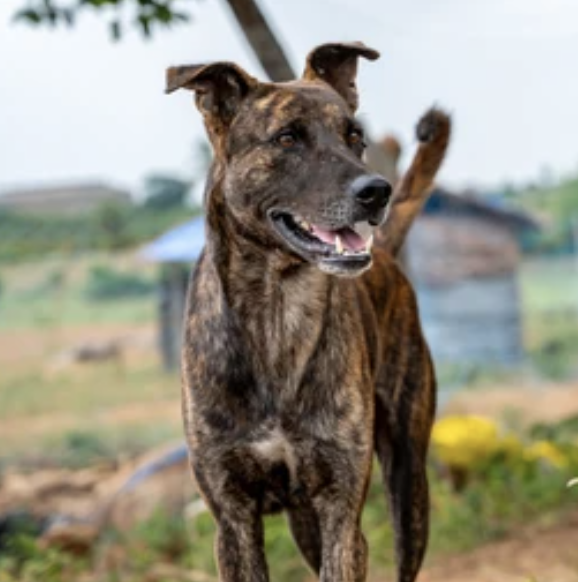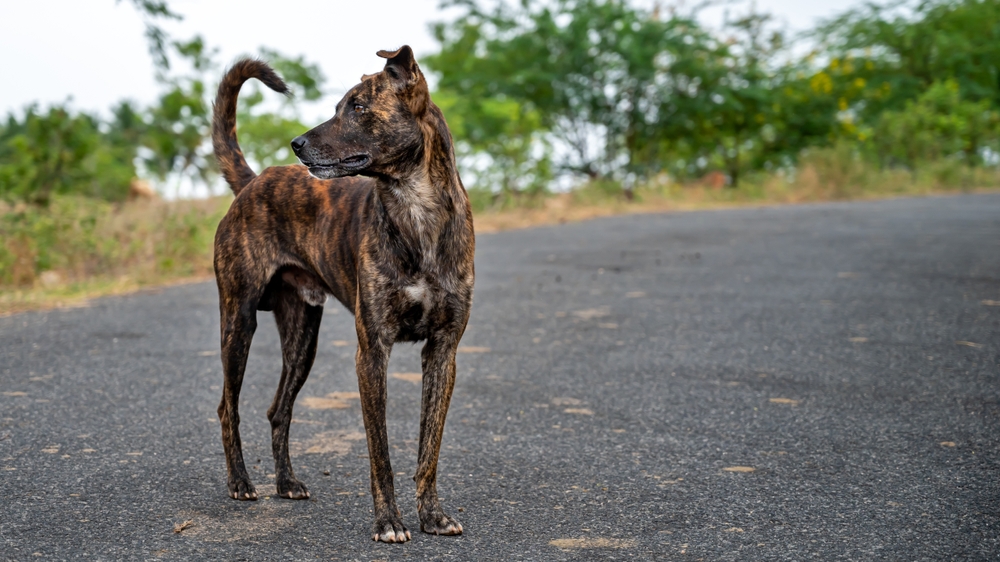
Blame the Brits who occupied India in the mid 19th century for calling the Pandikona dog the “Indian Doberman.” In their opinion, Pandikonas looked similar to Doberman Pinschers, and we suppose that with their short coats, aerodynamically shaped body, drop ears, and medium sized muzzle, they looked just like a Doberman Pinscher.
Uh, no.
Both are working breeds, and both are fearless, but most similarities end there. Nearly every dog color can be found on the Pandikona, and their tails may be curled over their back like a spitz breed,or they can be long and slightly curved.
And unlike the Doberman which enjoys healthy numbers (thank goodness), the Pandikona is in trouble.
But look at this. We’ve gotten ahead of ourselves.
The Pandikona comes from the harsh conditions of Kurnool district in India, a dry and arid area to which the dog has adapted. It is considered a “primitive” type breed, which is to say that the “breed” (more on that later) has evolved traits with little input from humans. Some might put it differently: Some might say that locals probably noticed the dogs and made the most of their existing traits without going to the trouble of purpose-bred breeding them.

The dogs made this easy. Very self-reliant and needing little care, the intensely territorial Pandikonas preferred to be left alone, but did seem to take naturally to guarding the humans in their proximity. Curiously, while often ill-tempered with other dogs, Pandikonas are very tolerant of children and make excellent pets with some training. That said, some sources state that adults shouldn’t push their luck: A Pandikona can forgive a child, but will take a threat or mistreatment from an adult very seriously.
This is an ancient breed, some say a modified version of the Indian Pariah dogs, and perhaps an ancient landrace. Pandikona dogs were trained by local villagers during the early 1300s to hunt their enemies, and later, were developed more specifically to hunt wild boar, and to go up against wolves and leopards. Highly independent, the dogs roamed at will when and wherever they felt like it.
Pandikona dogs – locally called “veta kukka,” are not registered with the Indian Kennel Club, let alone any other major Kennel Club, and this may beg the question: Why are we talking about the breed here?
Many of our purebred breeds were once considered landraces, and if this vulnerable dog is to have a fighting chance at survival, we figure that the more people who know about it, the better. Indians are late to the party when it comes to appreciating their native breeds, but they “get it” now, and we want to help one of very few ancient dog breeds that still exist in that country to get better known. You can get more information and see more pictures here, but there is also a private Facebook page (request to join) that has over 8.1K members and appears to be active.
Images from Shutterstock
